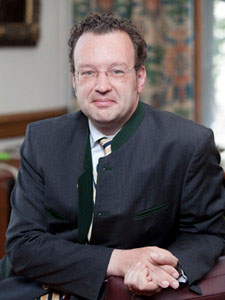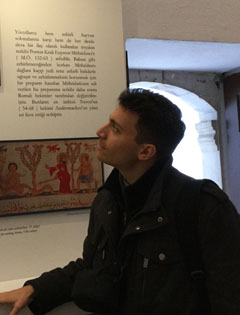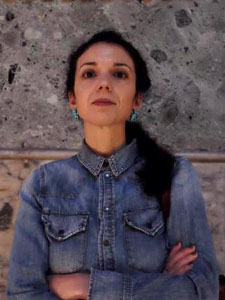Istanbul is a city with a fascinating history that stretches over three millennia. Having served as the capital of two successive empires, namely the Eastern Roman or Byzantine Empire (330–1453) and the Ottoman Empire (1453–1922), it is today a rich palimpsest of cultures and artistic traditions, in which architectural monuments of its Ancient, Roman, Byzantine, and Ottoman past serve as sites of historical and cultural memory woven into the ever-changing fabric of a 21st-century metropolis.
The Istanbul Documentation Project aims to create a digital platform for the virtual presentation of Istanbul's Ancient, Roman, Byzantine, Ottoman and early Republican sites and monuments, and thus provide a rich resource for scholars, students, and the general public to study the deep history of the city in preparation for site visits and as a dynamic tool for individual study, research, and teaching in the classroom. The available resources appear in a variety of digitized media and include high-resolution photographs, virtual-reality tours, panoramas, archival images, architectural plans and drawings, historic sketches, modern and historical maps, as well as detailed descriptions of individual buildings and artifacts.
Bringing together the disciplines of Art History, Archaeology, and Computer Science, we aim to retrieve and disseminate the multifaceted history of Istanbul’s iconic monuments (both extant and vanished) through this free-of-charge and open-access interface. Our objective is, first, to present and preserve the city’s architectural ensemble in digital form and, second, more long-term, to foster collaborations with other scholars and research institutions who work on analogous aspects of Istanbul’s unique heritage.
Who we are
Principal Investigator
 Holger A. Klein was educated in Art History, Early Christian Archaeology, and German Literature at the universities of Freiburg im Breisgau, Munich, London, and Bonn. His research focuses on Late Antique, Early Medieval, and Byzantine art and architecture, more specifically, on the cult of relics, reliquaries, and issues of cultural and artistic exchange.
Holger A. Klein was educated in Art History, Early Christian Archaeology, and German Literature at the universities of Freiburg im Breisgau, Munich, London, and Bonn. His research focuses on Late Antique, Early Medieval, and Byzantine art and architecture, more specifically, on the cult of relics, reliquaries, and issues of cultural and artistic exchange.
Professor Klein joined Columbia University as an Assistant Professor in 2000, was promoted to tenured Associate Professor in 2006, and to Professor in 2011. He served as Director of Art Humanities from 2003–04 and 2007–09, Director of Graduate Studies from 2010–12, and as Department Chair from 2012–15. During the 2015–16 academic year, he taught Columbia undergraduates at Reid Hall and served as Alliance Visiting Professor at the Université Paris I, Panthéon-Sorbonne.
From 2004–07 he held an appointment as the Robert P. Bergman Curator of Medieval Art at the Cleveland Museum of Art and continued to oversee the reinstallation of the museum's renowned collection of Medieval and Byzantine art until 2010. His work as a curator includes various international loan exhibitions, among them Restoring Byzantium. The Kariye Camii in Istanbul and the Byzantine Institute Restoration (Wallach Art Gallery, 2004), Medieval Treasures from The Cleveland Museum of Art (Bayerisches Nationalmuseum/The J. Paul Getty Museum, 2007–08) and Treasures of Heaven. Saints, Relics and Devotion in Medieval Europe (Cleveland Museum of Art/Walters Art Museum/British Museum, 2010–11).
Professor Klein is the recipient of several awards and prizes, including the 50th annual Mark Van Doren Award for Teaching (2011), which honors a Columbia professor's commitment to undergraduate instruction as well as inspiring leadership; the Lenfest Distinguished Faculty Award (2012), which recognizes unusual merit as a teacher of undergraduate and graduate students as well as outstanding scholarship; and the Wm. Theodore de Bary Award for Distinguished Service to the Core Curriculum (2014).
Post-Doctoral Research Scholar
 Georgios Makris received a B.A. (2010) in Art History and Archaeology from the University of Athens and an M.A. (2011) and a Ph.D. (2016) in Byzantine Studies from the University of Birmingham. His research focuses on Byzantine material culture, the history and archaeology of monasticism in the medieval Balkans, the architectural composition of rural settlements, and the interplay between center and periphery in the Byzantine world. His dissertation, Monks and Monasteries of Byzantine Thrace, examined the life-cycle, topography, and spatial composition of monastic communities in the western hinterland of Constantinople, the region of Thrace, from the tenth to the fourteenth centuries. In his work, Makris follows an interdisciplinary methodology that combines the systematic analysis of texts associated with religious institutions with the results of three seasons of archaeological fieldwork in Greece and Turkey. He has been involved in a number of archaeological projects across Greece, including most recently the Molyvoti Thrace Archaeological Project.
Georgios Makris received a B.A. (2010) in Art History and Archaeology from the University of Athens and an M.A. (2011) and a Ph.D. (2016) in Byzantine Studies from the University of Birmingham. His research focuses on Byzantine material culture, the history and archaeology of monasticism in the medieval Balkans, the architectural composition of rural settlements, and the interplay between center and periphery in the Byzantine world. His dissertation, Monks and Monasteries of Byzantine Thrace, examined the life-cycle, topography, and spatial composition of monastic communities in the western hinterland of Constantinople, the region of Thrace, from the tenth to the fourteenth centuries. In his work, Makris follows an interdisciplinary methodology that combines the systematic analysis of texts associated with religious institutions with the results of three seasons of archaeological fieldwork in Greece and Turkey. He has been involved in a number of archaeological projects across Greece, including most recently the Molyvoti Thrace Archaeological Project.
His doctoral studies have been supported by a number of grants, including scholarships from the A.G. Leventis Foundation and the Greek Archaeological Committee (UK). Makris has held research fellowships at Dumbarton Oaks Research Library (2014-2015, Junior Fellowship), and at Koç University’s Research Center for Anatolian Civilizations (2015-2016).
Doctoral Candidate
Ayşe Ercan is an active archaeologist and a doctoral candidate in the Department of Art History and Archaeology at Columbia University. She maintains a wide range of research interests that include settlement archaeology, trade in the medieval world, and interactions between cultural heritage and modern cityscapes in Turkey. She holds a B.A. in Archaeology from Istanbul University (2007) and a M.A. in Art History and Archaeology from Koç University, Istanbul (2010). Her Masters dissertation provided the first synthetic historical account of the harbor of Theodosios (modern-day Yenikapı, Istanbul) through a critical study of the recent archaeological excavations conducted by the Istanbul Archaeological Museums. She has participated in scholarly programs organized by Dumbarton Oaks, Kunsthistorisches Institut in Florenz, and École des Hautes Études en Sciences Sociales. In addition to her current research project on the Mangana complex of Constantine IX Monomachos located in Istanbul, Ercan has participated in numerous excavations in Turkey such as Perge, Sagalassos, Aphrodisias, Gre Amer in Batman, Küçükyalı and Rhegion in Istanbul, and Onchestos in Greece.
is an active archaeologist and a doctoral candidate in the Department of Art History and Archaeology at Columbia University. She maintains a wide range of research interests that include settlement archaeology, trade in the medieval world, and interactions between cultural heritage and modern cityscapes in Turkey. She holds a B.A. in Archaeology from Istanbul University (2007) and a M.A. in Art History and Archaeology from Koç University, Istanbul (2010). Her Masters dissertation provided the first synthetic historical account of the harbor of Theodosios (modern-day Yenikapı, Istanbul) through a critical study of the recent archaeological excavations conducted by the Istanbul Archaeological Museums. She has participated in scholarly programs organized by Dumbarton Oaks, Kunsthistorisches Institut in Florenz, and École des Hautes Études en Sciences Sociales. In addition to her current research project on the Mangana complex of Constantine IX Monomachos located in Istanbul, Ercan has participated in numerous excavations in Turkey such as Perge, Sagalassos, Aphrodisias, Gre Amer in Batman, Küçükyalı and Rhegion in Istanbul, and Onchestos in Greece.
Media Center for Art History
Within the Istanbul Documentation Project, the Media Center for Art History is responsible for the photography, cataloging, and processing of all materials from the two initial campaigns. Additionally, the Center developed and hosts the website for the Project.
Contact us
If you would like to get in touch with comments, suggestions, or questions, please email us at: mediacenter@columbia.edu